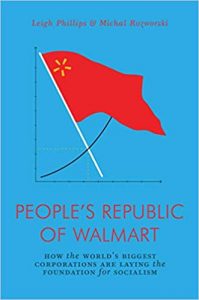Brett Christophers’ new book The New Enclosure: The Appropriation of Land in Neoliberal Britain is eye-opening. Or perhaps jaw dropping. Its subject is the privatization of publicly-owned land in Britain since the 1979 election of Margaret Thatcher. Christophers, a professor of economic geography at the University of Uppsala is a consistently interesting thinker. For instance, he was one of the first people to focus on the absurd way the contribution of the financial sector to total GDP is measured, in his Banking Across Boundaries. This new book demands attention for a remarkably little-debated aspect of the Thatcher revolution, the sale of around half of the land owned by th public sector when she was first elected.
The figures are startling in two ways. One is scale: around half of all land owned in the public sector in 1979 has been sold to private owners – including the land under council houses but much more from MoD and NHS land to school playing fields and parkland. The sum is probably more than £400bn. The other reason to be startled lies in that ‘probably’: there is scant data on what has been sold, to whom, at what price, and what remains. No figures, no debate.
One of the themes that stood out for me is the fact that the process has been a Whitehall (Treasury and Cabinet Office, assisted by the National Audit Office, whose idea of value in value for money excludes public value and public goods) assault on the wealth and power of local authorities. Christophers estimates that around 30% of the 1979 land holdings by central government and national bodies has been sold but 60% of the original holdings of local government. This means allotments, school playing fields, leisure centres, local museums, playcentres, town halls, bowling greens and so on – all formerly part of the fabric of community life. This evisceration of local assets ties in with the extraordinary burden of ‘austerity’ on local government. Surely a large number of local authorities are close to not being able to function, and so unable to deliver the services that are among those closest to people’s lives.
The book assesses the process as wholly ideological, generating none of the private sector efficiency benefits it was supposed to unleash. And, as it points out, the public sector should not be expected to behave like the private sector anyway. Why should its land be expected to generate the same financial return it could get in private hands? The public sector should be using public land to provide public goods.
The move to accrual accounting is pinpointed as a potential turning point: “Different accounting systems represent different ways of seeing: something visible under one system may not be visible under another, something accorded significant value under one system may be valued much less highly under another.” Accrual accounting makes it more likely that the value of public land will be recognised, and so bargain basement sell-offs less likely. For instance, many councils were valuing parks at £1 each. On the other hand, recognising their true worth – say £100m – makes them an even more tempting target for the Treasury to require to be sold.
As the book concludes, there is no evidence the privatization of land has delivered any significant benefits, but equally almost no serious study of the process at all. The lack of data no doubt explains why, so we owe Christophers thanks for assembling all the evidence he has managed to find.
My one quibble is the use of the term ‘neoliberal’. I think it obscures more than it enlightens, not least because those who deploy it often seem to believe all of economics is neoliberal – I still remember being gobsmacked by Wendy Brown’s bracketing of Joseph Stiglitz and Robert Lucas as essentially the same in their ideology. What’s more, the virtue-signalling to many social scientists in universities is likely to put off some other readers who would otherwise be sympathetic to the book’s argument. Michael Sandel managed to explore ‘neoliberalism’ in his bestseller What Money Can’t Buy without ever using the word, and was all the more influential for it.
Having said this, the book doesn’t massively overuse the adjective, and is well worth reading for the light it does shine – perhaps even on why Britain voted for Brexit, looking for somebody to blame for this huge but virtually unnoticed depletion of public wealth.
[amazon_link asins=’178663158X’ template=’ProductAd’ store=’enlighteconom-21′ marketplace=’UK’ link_id=’4e7b29c8-0234-11e9-bc66-815a0584c9d3′]
 The starting point is the Simon/Coase realisation that big firms are internally planned economies – if it works for Walmart, why wouldn’t it work at larger scale? The authors’ hypothesis is that economic planning might work better now that we have so much more powerful computers and better data.
The starting point is the Simon/Coase realisation that big firms are internally planned economies – if it works for Walmart, why wouldn’t it work at larger scale? The authors’ hypothesis is that economic planning might work better now that we have so much more powerful computers and better data. As seen at ASSA2020 in San Diego
As seen at ASSA2020 in San Diego